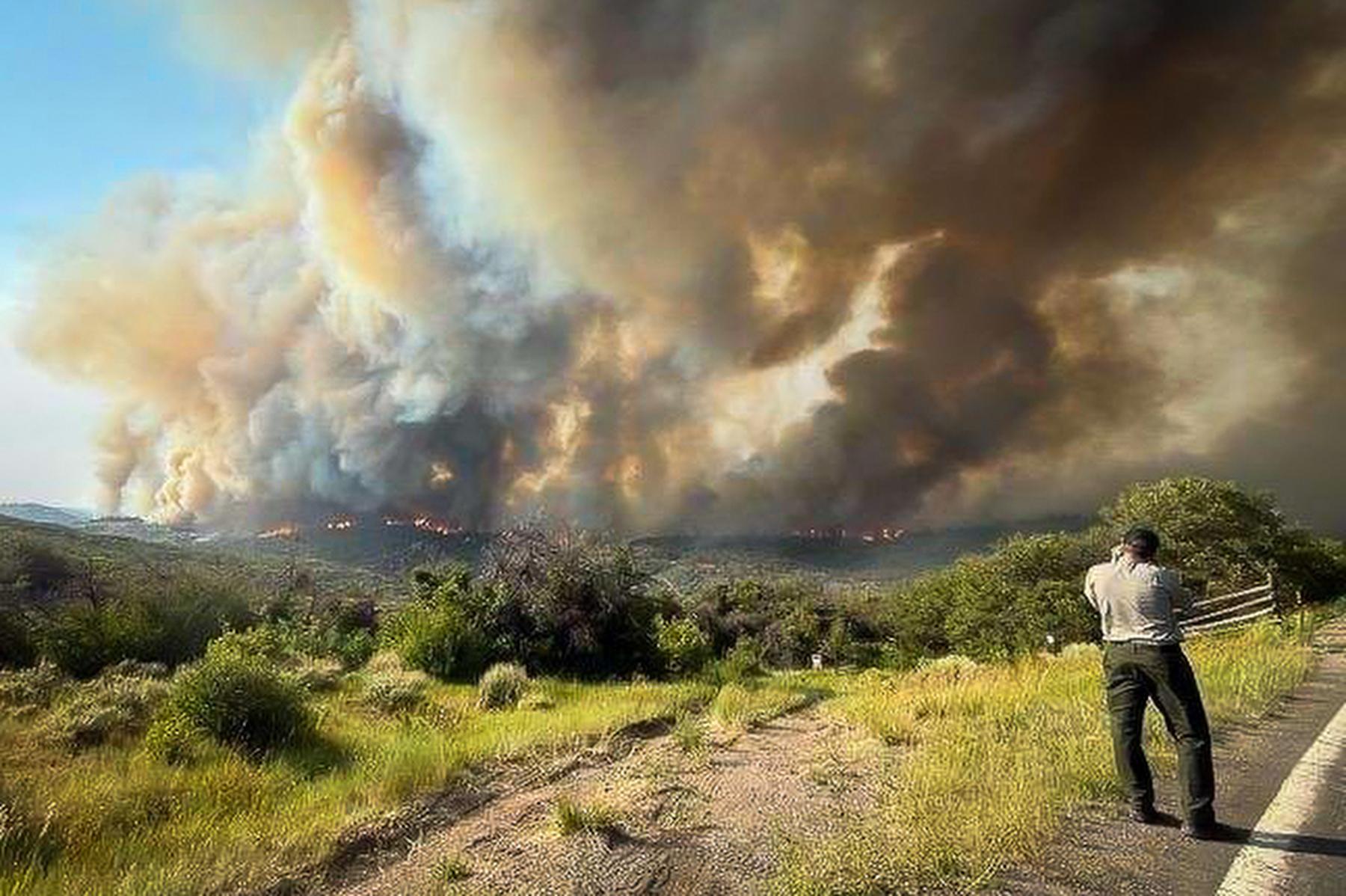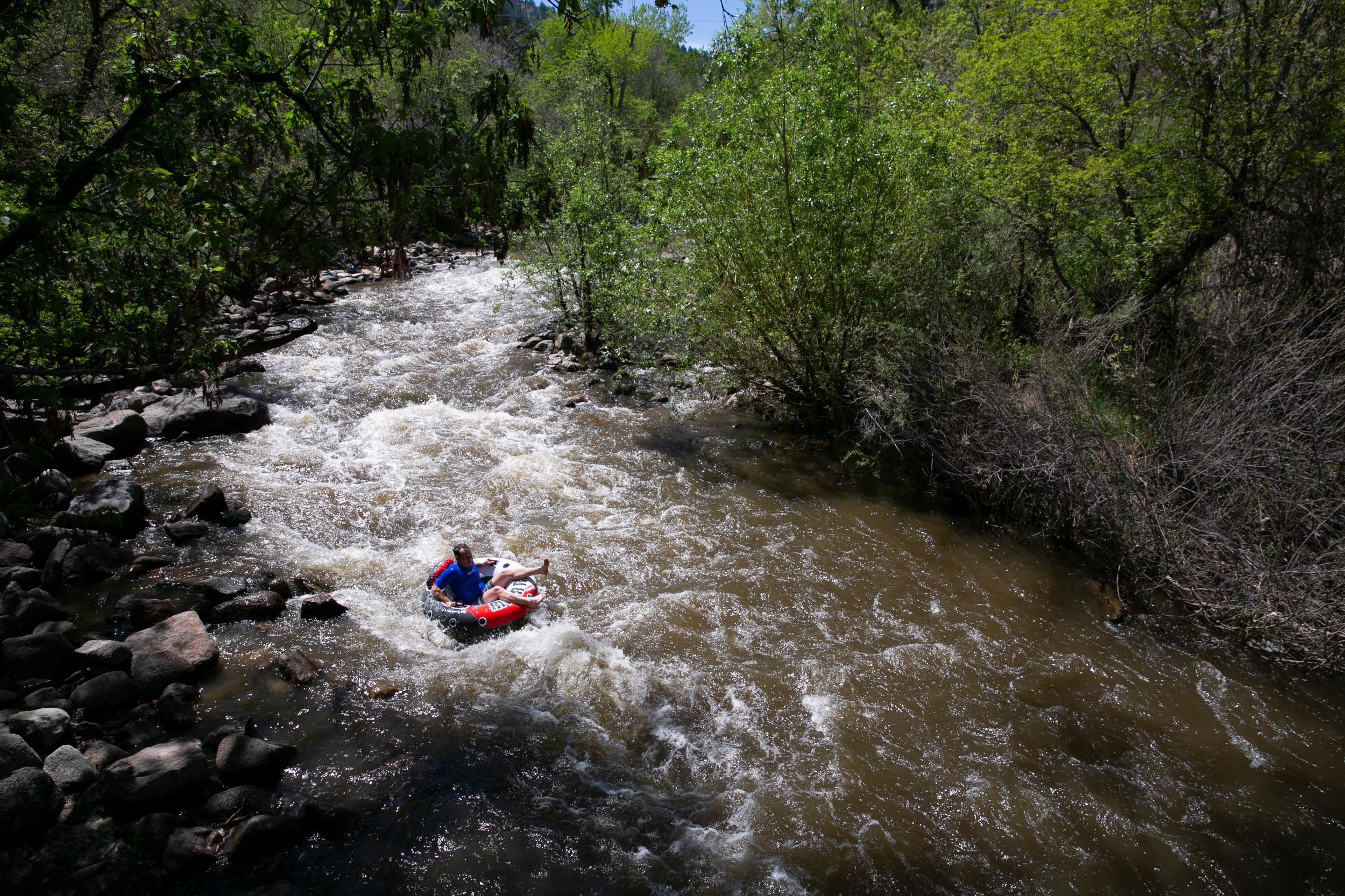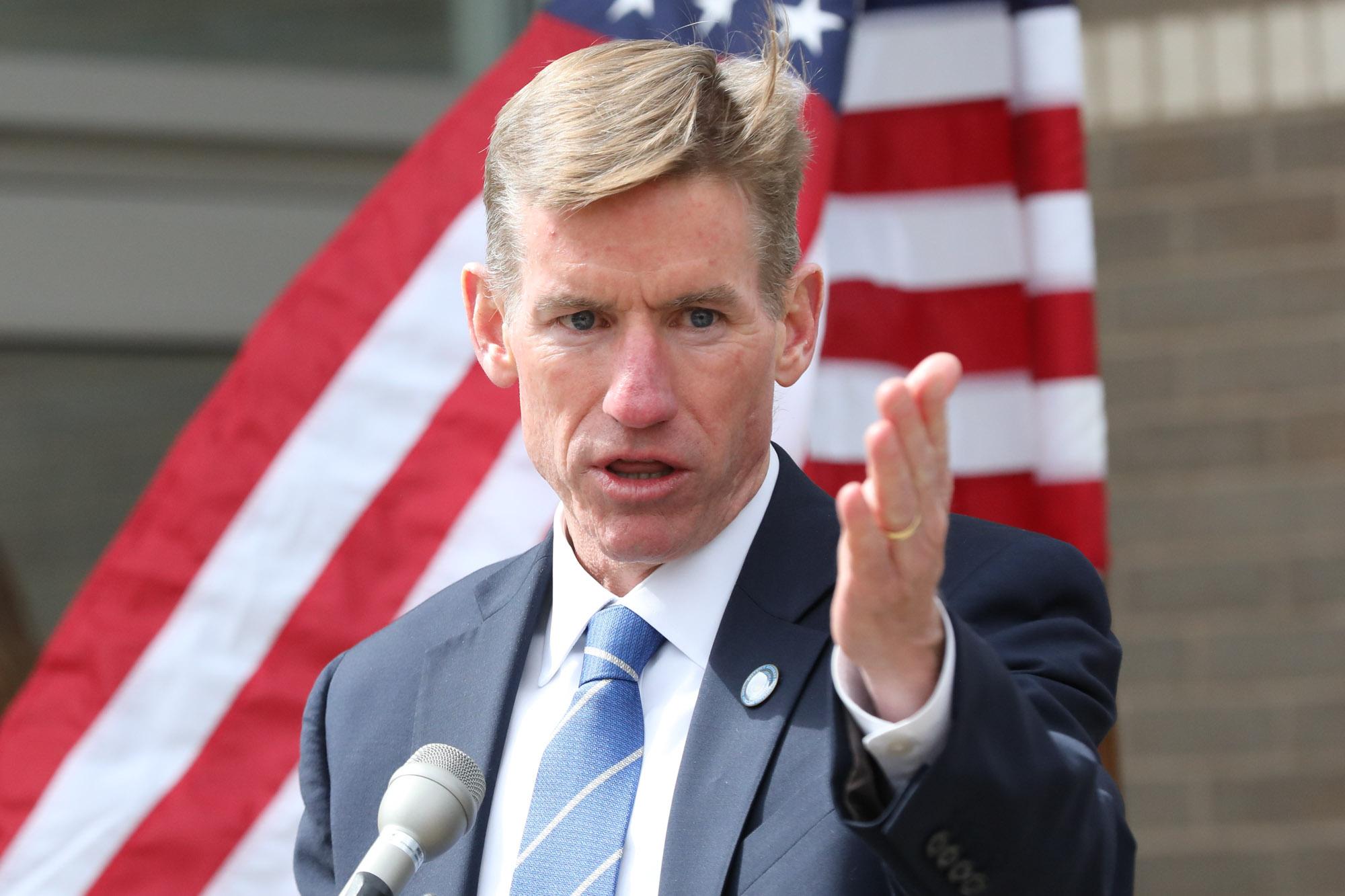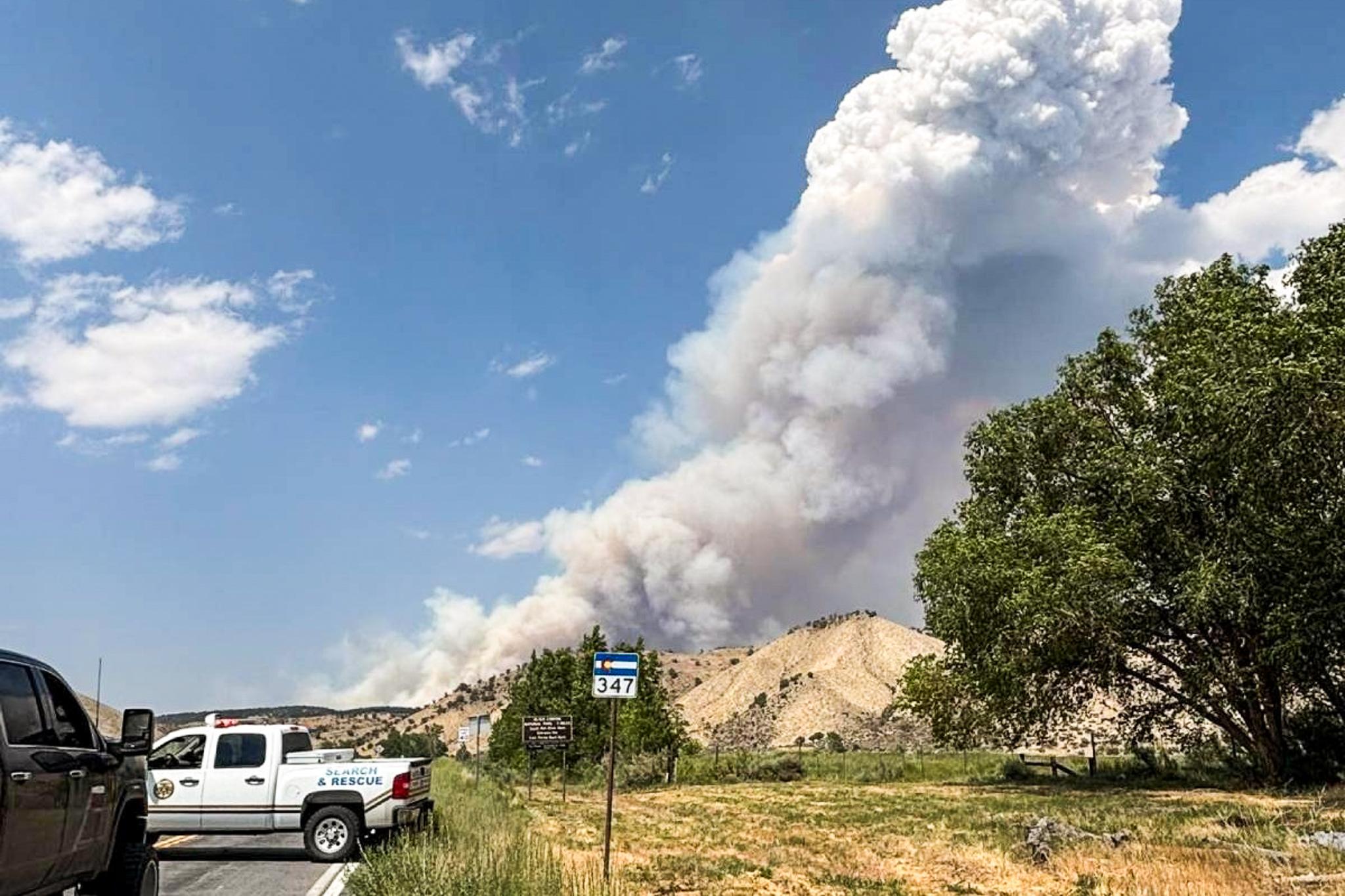Up until pretty recently, nostalgia for country music from the particular moment of the early-to-mid 1990s was as likely as not to be expressed with a playfully knowing wink. A few years back, the canny, established hit-maker Dierks Bentley and his touring band cooked up a nutty but clearly affectionate, costumed caricature of '90s country singers and songs and dubbed themselves the Hot Country Knights. Their set lists have included versions of songs by Alan Jackson, Tracy Byrd, Shania Twain and an array of other past hit-makers, but inevitably there's a Brooks & Dunn cover. During a spring 2015 performance in front a Nashville industry crowd, one of the special guests was "Ronnie Buns," played by Lady Antebellum singer Charles Kelley, who gamely preened through "My Maria," a Grammy-winning Brooks & Dunn redo of an early '70s tune, in a shaggy wig, aviator sunglasses and a lightning bolt print western shirt.
Bentley has kept the Knights gag going as a warm-up act on his arena tours. Meanwhile, the attention being paid to the solid gold and platinum country of the first Bush and Clinton eras — particularly the hearty output of Kix Brooks and Ronnie Dunn — has morphed into more serious forms this year. While ramping up to release Reboot, an energized, duet-style retrospective pairing the two veterans with new-generation admirers, they were named to the latest class of Country Music Hall of Fame inductees. This spring, at venues as wide ranging as the ACM Awards, the Ryman Auditorium and The Tonight Show, Brooks & Dunn have made appearances with a few of the young guns who contributed the album, and saw the project land atop the Billboard country chart. Even in the country music world, with its sweeping reverence for what's come before, it's not often these days that performers are canonized by the establishment and grafted onto the institutional narrative of the tradition at the same moment when they're enjoying a resurgence of youthful interest, influence and popularity in an ever-evolving genre. That it's happening right now to Brooks & Dunn is no small deal.
The duo launched during a boom time for modern honky-tonk approaches (as evidenced by the then-recent breakthroughs of Clint Black and Alan Jackson) and infusions of arena rock energy (on which Kiss-studying Garth Brooks was capitalizing). Already seasoned club performers, Ronnie Dunn and Kix Brooks pooled influences out of Texas and Oklahoma dance halls, harmony-rich West Coast country-rock, bluesy southern rock and classic Nashville. Their music had a hard country edge — a trait that no doubt stands out to ears acclimated to today's molten country-pop blends — but they were just as into rocking hard and swinging hard.
Brooks reflects on the phone, "I was always a little surprised — even to this day I still am — about people going, 'I don't know what this [new] stuff is, because y'all were real country.' We always felt like we were honking it pretty hard out there."
The duo's great paradox is that it sprang from manufactured origins — two failing solo artists, then ages 36 (Brooks) and 38 (Dunn), matched up by a record executive in 1991 — and yet endured as a bold-faced presence on the country airwaves for some 17 years, and in the process helped raise the bar for a power-packing sound and persona. Rather than burying that origin story, Brooks & Dunn milked it; the difference between their personalities has lent their work an interesting tension — Dunn brooding and Brooks bustling in the separate but intersecting orbits they inhabit on stage — and yielded countless inside jokes. At the press conference announcing their Country Music Hall of Fame induction, Brooks, the more gregarious of the two, feigned shock when Dunn shook his hand as they swapped places at the podium.
They weren't just dynamic entertainers — they also had marketing savvy, and recognized the importance of projecting a stirring image from the start. "If we were focused on doing anything on purpose, it was branding," says Brooks, sounding like the avid business mind (and onetime chairman of the Country Music Association board, the trade organization tasked with championing the genre worldwide) that he is. "I think we realized we had to have a direction as far as just our look, where we were coming from as a duo thematically."
In a separate conversation, Brooks & Dunn's longtime manager Clarence Spalding confirms, "They've always had a real vision of who they are and what they want to be. ... It wasn't a lot of manager magic dust going on then, I'll tell you that."
The duo's visual aesthetic expanded Dunn's fascination with the untamed expanses of the western U.S. into full-scale cowboy mythology. Brooks' brother-in-law designed their steer skull logo. The first music video, for '91 debut "Brand New Man," introduced backdrops to which Brooks & Dunn would return over and over again; in some scenes they were lanky cowboys in a rust-hued desert landscape; in others they were up on stage, giving women a reason to hoof it on the honky-tonk floor. Four singles in, they famously reignited the national line dancing obsession with "Boot Scootin' Boogie," a song written by Dunn, but initially recorded as a springy boogie-woogie number by the western swing group Asleep At the Wheel. Brooks & Dunn's version, a sinewy shuffle with searing slide guitar licks, was given a remix, with beefed-up synth bass and digitized backbeat meant to entice club DJs to spin it alongside crowd-pleasing pop and hip-hop records, a one-off strategy that plenty of ambitious country performers to come would embrace as a philosophy.
The early '90s were a time when country's popular audience was broadening. Brooks & Dunn built a following that combined core country listeners with fans who'd grown up on classic rock, and delivered them a revved-up, theatrical, effects-filled concert experience. "We looked more like a big rock show than we were a country show at all times," Spalding says. "We brought in different set designers each year and we would go to a lot of rock shows. We were friends with Metallica's manager. Every time he would come to town, he would call me and go, 'Clarence, you want to come down and try to steal something?'"
Spalding estimates that his clients once dropped $150,000 on the research and development of a cannon to propel Brooks & Dunn-like dummies into the audience; safety concerns prompted a switch to shooting confetti instead. One of their most involved productions was the Neon Circus & Wild West Show, which rolled into town with a trick roper, fire eaters and a whole lot else. Brian Mansfield, an observant chronicler of the country scene for USA Today for many years, recalls that the combination of daredevil antics and an all-male lineup (at times including Toby Keith, Montgomery Gentry and Keith Urban) inspiring the nickname "testosterone tour."
Brooks admits that he and his partner used to wonder whether they'd become known more for their spectacle than their songs. "This could easily be taken the wrong way," he chuckles, "but I think a lot of times when you're blessed with the kind of success that we were, you make yourself a really big target. And I think critics as a whole really liked taking shots at us because they thought that we were really not taking ourselves seriously."
Erring on the side of taking themselves too seriously probably wouldn't have endeared them to country fans anyhow, but this year's commemorations, arriving more than a quarter-century on from their breakthrough, have undoubtedly cast their career in a respectful light. "Now what people are talking about is the music," Brooks observes. "That's what makes us smile the biggest."
He and Dunn wrote both separately and together, frequently arriving at virile, vital applications of familiar imagery and idioms. Their roadhouse romps might cozy up to convention without feeling cursory. The protagonists came off as wry, life-weathered and still a little wild, and the songs' female characters could be equally strong-willed and restless.
Mansfield points to some latter-day Brooks & Dunn singles — songs less steeped in western iconography than the modest pleasures found in small-town anywheres — as helping lay out elements that wouldeventuallycalcify into a formula for their successors. In his view, their briskly sentimental reminiscence and 2003 chart-topper "'Red Dirt Road' pretty much started the back road/dirt road genre."
"I mean, if you go back and look," he reasons, "that's where the phrase really comes in to the mainstream country lexicon, but it's still probably the best of those songs. There was some bit of country wisdom in those songs that, with Ronnie singing, it sounded like it had been really hard won."
Brooks supplied some of the duo's lead vocals, but that role most often fell to Dunn, who conveyed the strain of maintaining stoic steadiness in subtly moving ways.
The brawn of their sound took on new features too. Mansfield has come to view Brooks & Dunn's minor 2006 hit "Hillbilly Deluxe" — a tune with a muscled-up backbeat, a briery thicket of southern rock guitar, rolling banjo and near-rapping about cruising for excitement in customized pick-up trucks — as a bellwether for "where country music was about to go."
By the early 2010s, the country airwaves were indeed populated with depictions of down home revelry that heavily incorporated the influence of hip-hop and had unmistakably youthful, frat party appeal, a trend exemplified by Florida Georgia Line's diamond-certified colossus "Cruise." While engaging with and borrowing from other pop forms has always been part of the commercial country life cycle, during this particular round, male acts (and their songwriting and studio collaborators) put an inordinate amount of energy and focus into replicating a diverting but not especially sturdy template. Proficiency in this hybrid style brought radio-driven, commercial rewards; that was the type of versatility in high demand — but only coming from men (if anything, this further eroded women's already shrinking share of airplay). For many male artists, fleshing out a more robust, many-sided persona like Brooks & Dunn had, with their vigorous sounds, pining machismo and showbiz gusto, seemed beside the point.
In those years, Brothers Osborne couldn't get much traction with their extremely sly, jammy, guitar-driven grooves, nor could Jon Pardi, possessed of a nervy, needling vocal attack and committed to feverish, danceable honky-tonk updates for the youthful party crowd. They found narrow openings once the bro country bubble began to burst. "If you want to be a little more traditional, now it's starting to be a little bit more acceptable at country radio," Pardi told me in 2016, while also cautioning that "it's never gonna be like the '90s again."
Still, a new pattern was emerging even then: ascendant, male stars clearing space alongside suave, beat-driven jams for small doses of rollicking, hard-twanging '90s country flavor. To arrive at those tracks on albums by Thomas Rhett, Morgan Wallen, Kane Brown and eventually even Florida Georgia Line, the latter newly intent on flexing good-humored, down-home country-ness, was to hear artists lightheartedly blowing off steam and drawing energy from nostalgia.
Around this same time, the trio Midland found acclaim and airplay by staking its entire, and entirely self-aware, look, sound and mythology on sifting textures and tones from the Eagles' 1970s reign, the barroom Adult Contemporary of the Urban Cowboy '80s and the honky-tonking early '90s. Then there was Luke Combs, whose ability to merge his potent vocal presence, affably self-deprecating personality and slices of blue-collar wit with casually current writing and production approaches rapidly propelled him to country stardom. I interviewed him in 2016 when he was watching the initial climb of the first of five consecutive radio chart-toppers, and he lit up when I compared his vocal attack on a particular track to Ronnie Dunn's. "It's super Brooks & Dunn!" he enthused. "It really is!"
Combs was riding high on his own success by the time he met the duo's manager. Spalding says he was caught off guard when Combs came charging up to him in the VIP section of a venue to testify that he'd worn out his cassette copy of Brand New Man as a kid, and that it was "the reason [he] moved to Nashville." People had also been sending Spalding video clips of Combs and Kacey Musgraves covering Brooks & Dunn, so he decided to pitch his clients — who'd retired from recording and touring, other than a Vegas residency with Reba McEntire, who gave them their first major opening slot long ago — on revisiting some of their hits with acts who'd come along well after their heyday.
Brooks, who's stayed abreast of the latest trends as host of the weekly American Country Countdown, claims to have had his doubts about how younger artists would connect with the material. "I didn't question that any of them were good singers," he says. "But we didn't want to put people in awkward situations, and you're always just a little curious about how this is gonna go."
Quite well, it turns out. Not one of the dozen performances captured on Reboot sounds like it's delivered from a disengaged distance. Musgraves' glassy, vocoder-assisted version of "Neon Moon" distills its reflective sense of melancholy. Rhett brings breezy, rhythmic buoyancy to the Latin-tinged confection "My Maria," Brothers Osborne make "Hard Workin' Man" feel rash and loose, Brown leans into the narrative arc that gave "Believe" emotional heft and Midland ups the mischievousness of "Boot Scootin' Boogie" (and remains in that mode in its own new line dance number). Combs and Pardi chose to stick the closest to Brooks & Dunns' original arrangements. Romping through the hopped-up two-step "My Next Broken Heart," with its amiable angle on dejection and rebound-romance, is Pardi's way of circling back to the country approach that taught him showmanship. "To me, that was some of the ultimate jukebox country right there," he affirms.
Since Pardi's worked throughout this decade to find his footing in the industry and adapt his hard country sensibilities to the latest waves of pop influence in ways that he's comfortable with, he had an up close view of the fatigue that seemed to creep in after bro country peaked. "I feel like whatever sound becomes super popular and then nobody wants to hear it anymore," he says. "They want something new — something like that, but different."
It makes sense to him that his peers are turning to '90s country for rejuvenation — not out of fealty to tradition so much as the craving for a red-blooded sense of identity. "I think it's like, 'Man, remember this?'" he explains. "'This was fun too.'"
9(MDEyMDcxNjYwMDEzNzc2MTQzNDNiY2I3ZA004))







